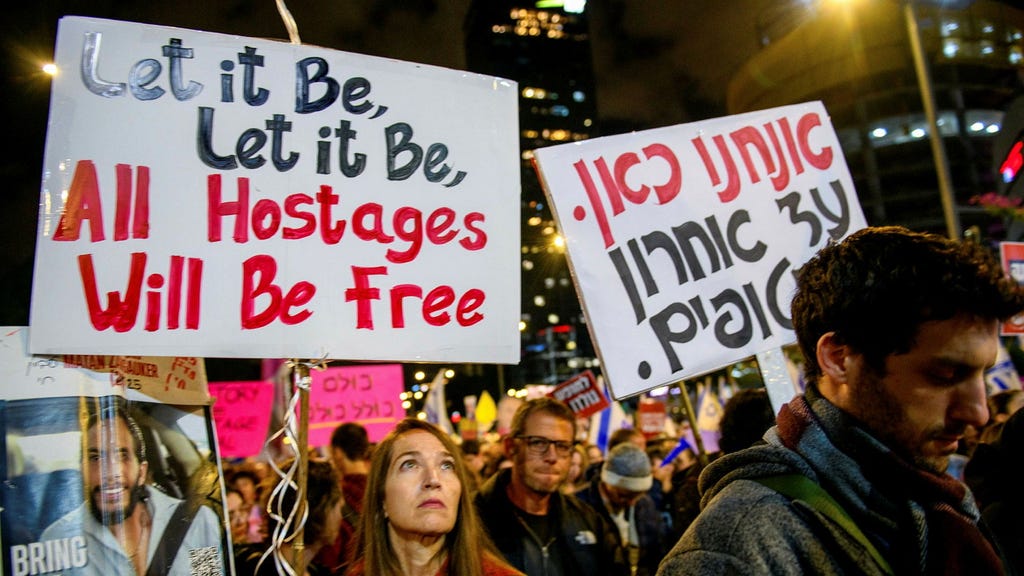The fragile ceasefire between Israel and Hamas brought a mixed bag of emotions and uncertainties for both sides. In East Jerusalem and the West Bank, Palestinian families prepared to welcome home approximately 100 ”light” security prisoners, individuals not directly involved in acts of terror. However, the release was tinged with bitterness as 236 of the 735 Palestinians slated for release in the first phase were to be deported to Turkey, Qatar, and Algeria, a move by Prime Minister Netanyahu aimed at appeasing critics concerned about potential security risks. Ironically, Israeli security services opposed the deportations, preferring to keep their adversaries within reach for easier monitoring.
In stark contrast to the cautious celebrations in Palestinian territories, the ceasefire ignited a profound sense of anxiety in Israel. For the families of the remaining hostages, the uncertainty surrounding their loved ones’ fate was agonizing. While some families anticipated the return of their captured relatives, others faced the harrowing prospect of an extended wait, clinging to hope while fearing the worst. This anguish was exacerbated by conflicting messages; ultranationalist factions vowed to resume hostilities once the initial phase of the ceasefire concluded, while assurances from both the Biden and Trump administrations offered a glimmer of hope for a continued peace process. This precarious balance between hope and despair underscored the deep emotional toll of the conflict on the Israeli populace.
Hamas, seizing the opportunity presented by the ceasefire, orchestrated a calculated display of power in the evacuated areas of Gaza. Parades of armed Izzeddin al-Kasam fighters in white Toyota pick-up trucks, reminiscent of the vehicles used in their initial attack, served as a stark reminder of their continued military presence. While the public response appeared muted, the demonstration’s primary objective was to solidify Hamas’s control over Gaza, sending a clear message to international powers, the Palestinian Authority, and Israel that any future plans for Gaza’s governance must contend with their dominance. This assertive posturing highlighted the complex political landscape and the challenges ahead in establishing a lasting peace.
The second phase of the ceasefire negotiations, set to begin in two weeks, carried the weight of immense expectations and potential pitfalls. Israel’s demands for Hamas’s disarmament and relinquishment of control over Gaza were deemed unrealistic, effectively serving as bargaining chips rather than genuine preconditions. For Hamas, the first two phases of the ceasefire were viewed as mere formalities. The release of Palestinian prisoners, typically a paramount objective in past hostage situations, paled in comparison to the suffering endured by Gaza’s civilians during the conflict. Hamas’s acceptance of the ceasefire was primarily driven by a strategic imperative: to force a definitive end to the war.
The long-term success of the ceasefire hinges on a delicate interplay of political and international pressures. Hamas leadership understood the political challenges Israel would face in restarting hostilities after demobilizing thousands of soldiers. Several factors could potentially deter renewed conflict: pressure from the United States, Israeli public opinion demanding the return of all hostages, and the threat of international economic sanctions. While none of these factors individually guaranteed Netanyahu’s compliance, the combined weight of these pressures created a significant constraint, particularly given the fragility of his coalition government.
The ceasefire, therefore, represented a fragile and uncertain peace, fraught with anxieties and potential for renewed conflict. For Palestinians, the release of prisoners was a source of relief, albeit overshadowed by the deportation of others. For Israelis, the focus remained on the fate of the remaining hostages, with families caught between hope and despair. Hamas, through its display of strength, asserted its continued dominance in Gaza, while the upcoming negotiations carried the weight of both promise and peril. The ultimate outcome remained uncertain, dependent on a complex interplay of internal and external pressures on both sides. The ceasefire was not an end in itself, but rather a precarious stepping stone towards a potentially more durable peace, the path towards which remained fraught with challenges.














